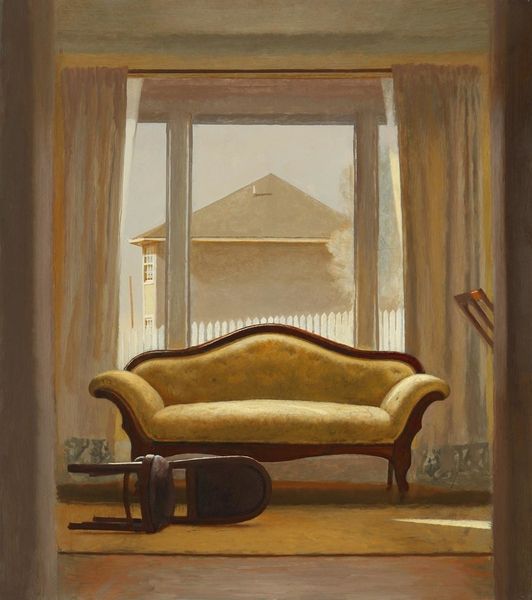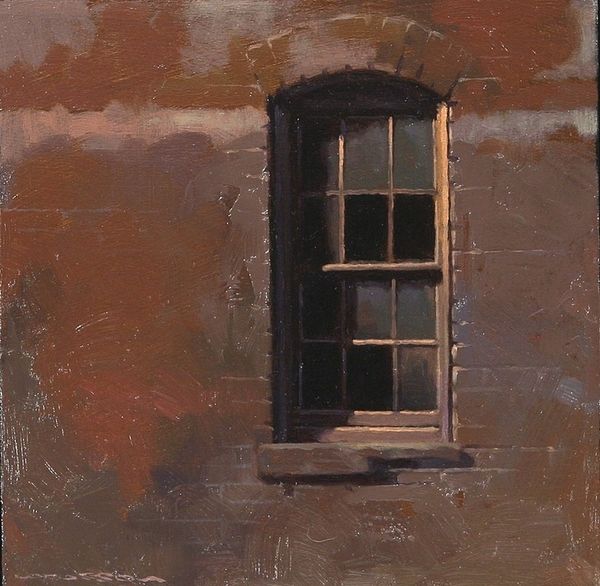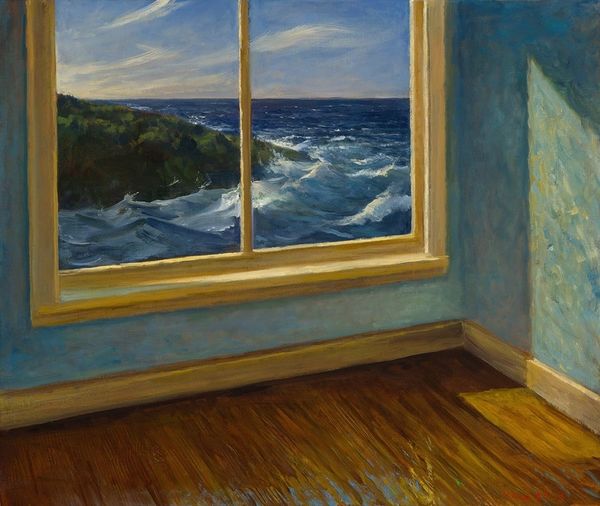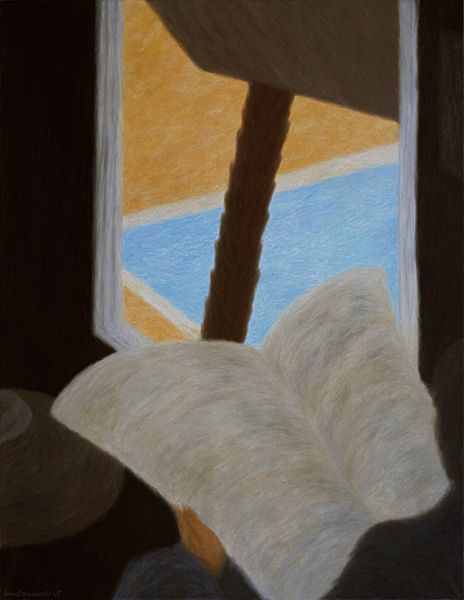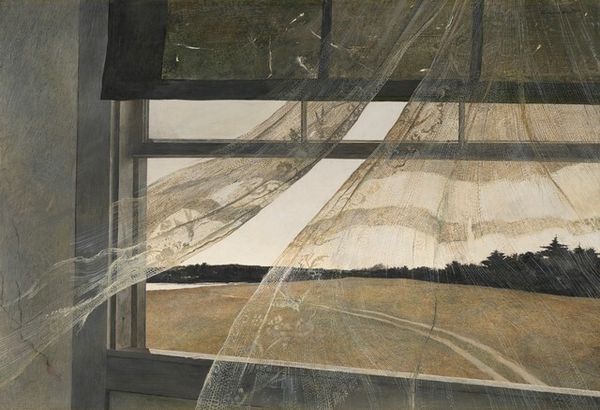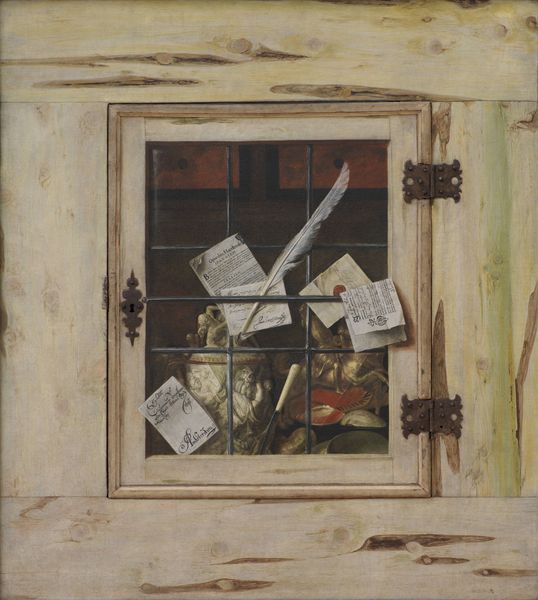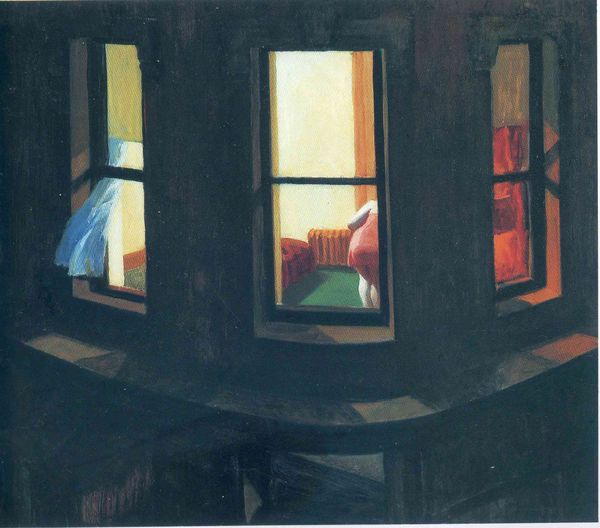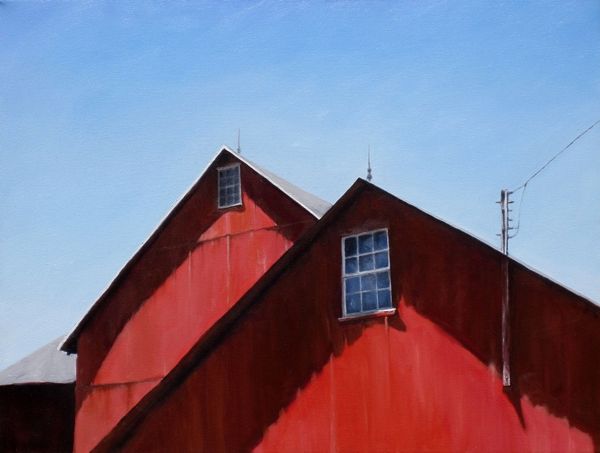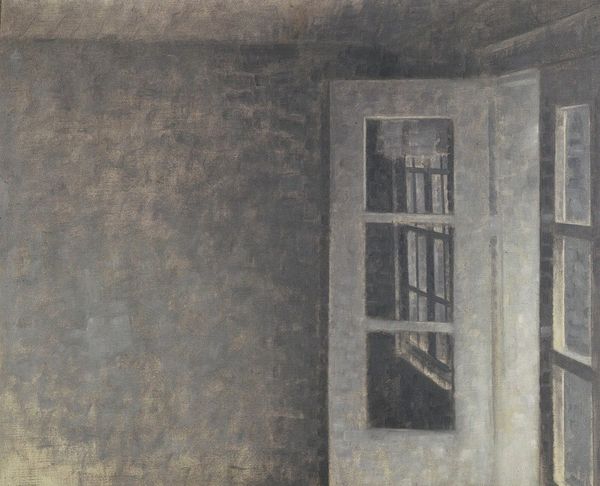
plein-air, oil-paint
#
plein-air
#
oil-paint
#
landscape
#
oil painting
#
realism
Copyright: Modern Artists: Artvee
Editor: We're looking at Bo Bartlett's "The End of Summer" from 2006, an oil painting that depicts a view through a window. I'm struck by how the geometric shapes of the window frame and the building outside create a sense of order and containment. What compositional elements stand out to you? Curator: The articulation of space through the window’s grid is quite deliberate. Notice how Bartlett frames the external world – specifically, the architecture and a sliver of the sea – within a tight, almost classical structure. It begs the question: how does this rigorous framing influence our perception of what lies beyond the glass? Consider also the interplay between the cool exterior light and the implied warmth within the room, further articulated by the shadows on the left side. Editor: That’s fascinating. It almost feels like the window itself is another character in the painting, mediating between the viewer and the scene. How does the texture of the paint contribute to this feeling? Curator: The textures, albeit subtly rendered, play a significant role. Observe the smooth, almost ethereal rendering of the sky compared to the slightly rougher, tactile quality of the building's shingles and the weathered wood of the window frame. This differentiation, through textural variation, adds depth and realism to the composition, highlighting the materiality of both the exterior and interior elements. Editor: So, it’s not just about what we see, but how we see it, thanks to the painter's choices. I will certainly look more deeply into the structure of a painting from now on. Curator: Precisely! The painting invites us to consider the framework through which we perceive reality. A valuable lesson in the language of art, indeed.
Comments
No comments
Be the first to comment and join the conversation on the ultimate creative platform.
